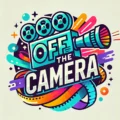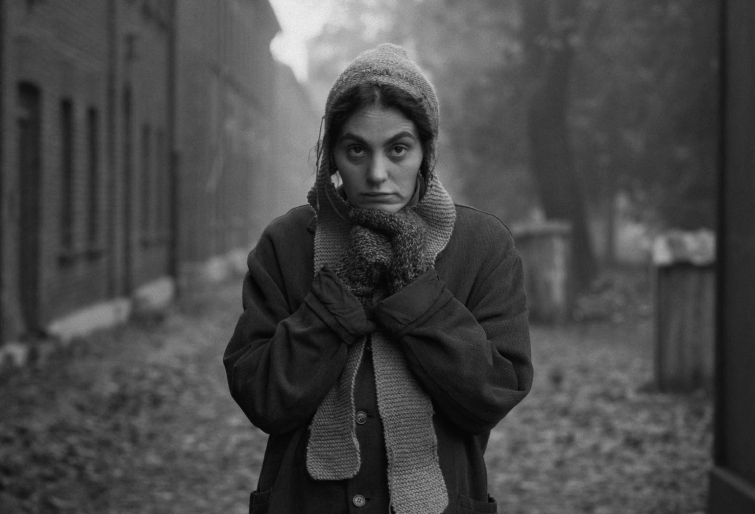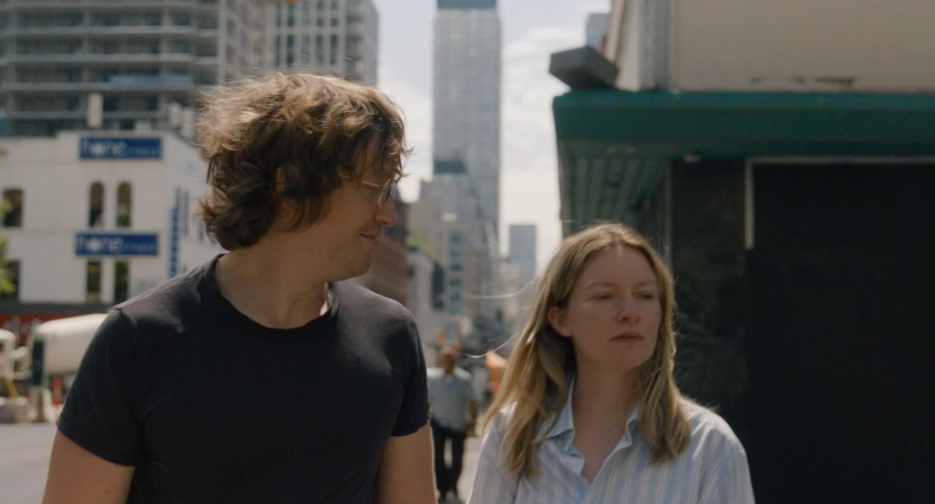OTC Rating : 4/5
Introduction
Diamond Island, directed by Davy Chou, is a quiet, atmospheric coming-of-age story set against the backdrop of Cambodia’s rapid urban development. Streaming on MUBI, the film immerses us in the lives of working-class youth who are both spectators and participants in the birth of a gleaming new city. Through subtle storytelling and strong visuals, Diamond Island explores themes of friendship, identity, and disillusionment. The film is a visual and auditory experience that uses its cinematic language to say more than its characters ever could.
Story & Narrative Structure
The story follows Bora, a teenager from the countryside who comes to Phnom Penh to work on the construction site of a futuristic real estate project called Diamond Island. There, he reunites with his long-lost older brother Solei, who introduces him to a new world of nightlife, dreams, and uncertainty. As Bora tries to navigate between his humble background and the glitzy illusion of success, the film gradually unfolds a tale of youth in transition—socially, emotionally, and physically.
The narrative isn’t driven by major plot twists but by small moments and silent observations. It feels more like drifting through memory than watching a traditional storyline. This structure reinforces the emotional tone of longing and confusion that defines adolescence.
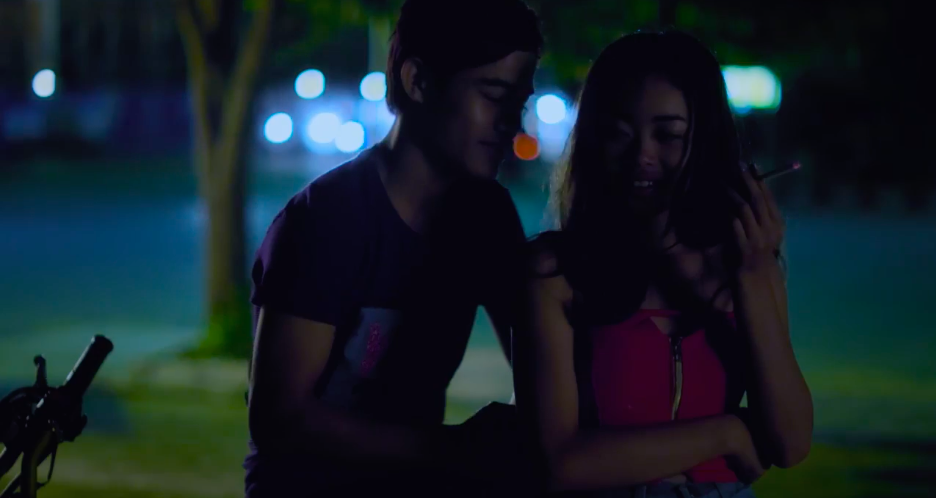
Image courtesy : MUBI
Direction & Cinematography
Davy Chou directs with a minimalist, almost documentary-like sensitivity. He allows the camera to linger on faces, spaces, and silences. There’s no rush to tell the story—Chou is more interested in letting us feel it. The pacing is slow but intentional, creating space for reflection and visual storytelling.
Cinematographer Thomas Favel delivers stunning visuals, especially at night. The neon glow of the construction site and the city lights contrast sharply with the day’s dusty, flat landscapes. There’s a surreal beauty in how he captures the artificial promise of the city—at once inviting and alienating. The camera often frames Bora as a small figure among grand, unfinished structures, emphasizing how small and uncertain his place in this new world really is.
Performances
The performances in Diamond Island are deeply naturalistic. Many of the cast members are non-professional actors, and this choice adds authenticity to the film. Sobon Nuon as Bora delivers a subtle but emotionally resonant performance. His wide-eyed innocence and quiet resilience make him a compelling center of the film.
Cheanick Nov as Solei brings a sense of mystery and charisma to his role. His presence is both comforting and unsettling, as he becomes a symbol of a life Bora both admires and mistrusts. The supporting characters—all young workers with their own stories—add to the film’s texture without ever feeling forced.
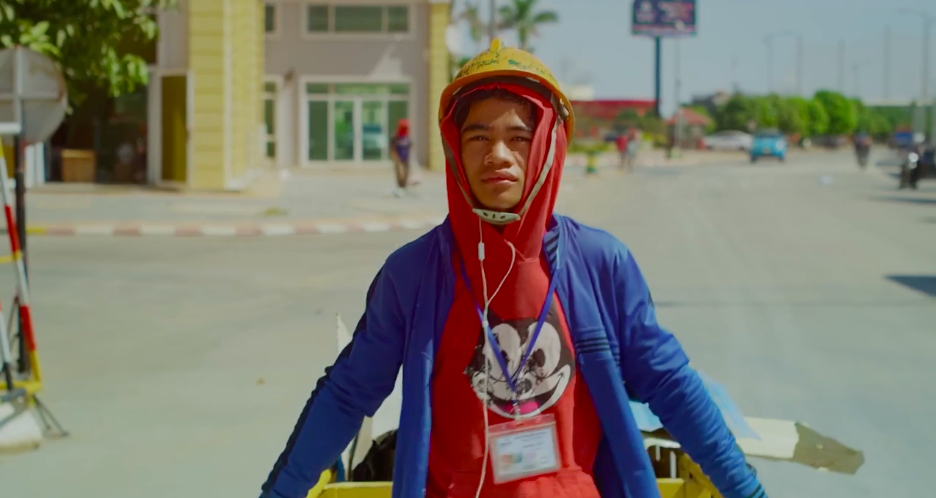
Image courtesy : MUBI
Production & Art Design
The contrast between the dusty construction zones and the futuristic, glowing buildings provides more than just a backdrop—it’s a metaphor for the collision between past and future. The production design is grounded in reality, showcasing raw cement, exposed wiring, and empty shells of luxury buildings. Yet, there’s an eerie beauty in this half-finished dream.
Wardrobe choices are simple but telling—loose work shirts, flip-flops, borrowed T-shirts from Western brands—all subtly marking the characters’ social status and their aspirations. The environment is an essential character in itself, speaking volumes about the gap between the promise of modernity and the reality of laborers who build it.
Sound Design & Music
The sound design in Diamond Island is rich with ambient detail. You hear the soft buzz of fluorescent lights, the hum of motorbikes, and distant chatter—grounding the viewer in the urban Cambodian setting. Silence is also used effectively, making the occasional bursts of music feel more emotional and poignant.
The soundtrack, composed by Jérémie Arcache and Christophe Musset, blends electronic elements with haunting melodies. The background music never overwhelms the scenes but heightens the dreamy, dislocated mood of the film. The BGM often feels like a distant echo—present, but elusive, much like the future the characters dream of.
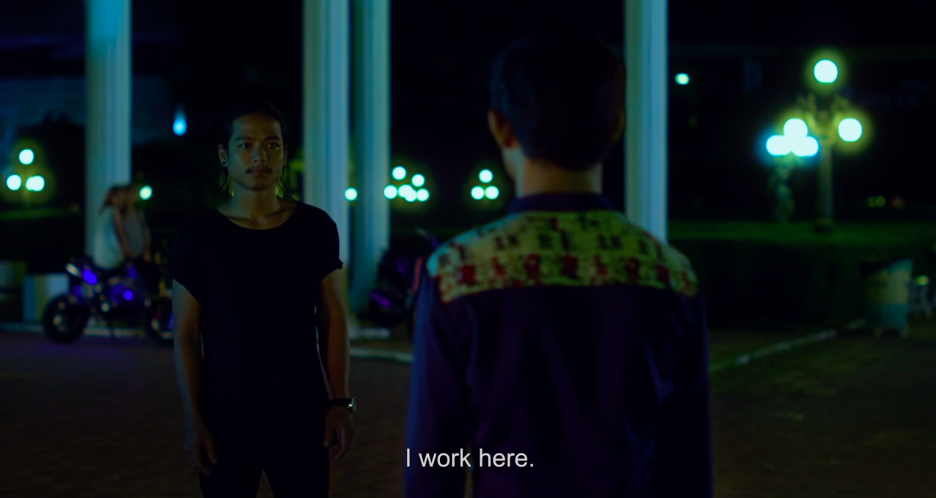
Image courtesy : MUBI
Editing
Laurent Sénéchal’s editing is subtle and smooth, emphasizing the film’s rhythm and atmosphere over fast cuts or flashy transitions. Scenes are given time to breathe, which helps in building an immersive experience. Transitions between day and night are fluid and often symbolic, marking Bora’s shifting state of mind.
The editing also supports the dreamlike quality of the film, especially during the scenes involving Bora and his brother’s group of friends. Moments blend into each other like memories rather than distinct events, reinforcing the film’s meditative tone.
Conclusion
Diamond Island is a beautifully crafted film that captures the fragile dreams and quiet frustrations of youth caught between tradition and a rapidly changing world. With its delicate direction, expressive cinematography, and grounded performances, it doesn’t shout its message—it whispers it, gently and powerfully.
This is a film that rewards patience and attention, offering not only a glimpse into Cambodian society but also a universal story of growing up in uncertain times.
Why Watch It:
- A visually stunning look at modern-day Cambodia through a poetic lens.
- Realistic performances by a largely non-professional cast.
- Evocative sound design and a hypnotic score.
- Thoughtful exploration of youth, identity, and dreams.
- A slow-burn film that leaves a lasting impression.
